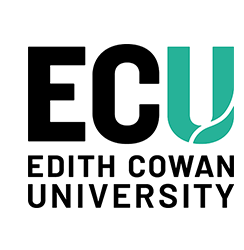Author Identifier (ORCID)
Glenn Hyndes: https://orcid.org/0000-0002-3525-1665
Chandra P. Salgado Kent: https://orcid.org/0000-0002-3460-609X
Abstract
Coastal environments and their associated biota provide numerous environmental, economic and societal services. Cockburn Sound, a temperate embayment on the lower west coast of Western Australia, is immensely important for the State and adjacent capital city of Perth. However, urbanisation and associated terrestrial and marine development has the potential to threaten this important ecosystem. This study collated published and unpublished data to review the current state of the ecological resources of Cockburn Sound and describe how they have changed over the past century. Post-WWII, the embayment began undergoing pronounced anthropogenic changes that limited oceanic water exchange, increased nutrient load, modified benthic habitats and increased fishing pressure. The most visual outcome of these changes was substantial eutrophication and the loss of 77% of seagrass habitats. However, the increased primary productivity from elevated nutrient inputs produced high commercial fishery yields of up to ~1,700 t in the early 1990s before improved wastewater regulation and restricted fishing access steadily reduced commercial catches to ~300 t in recent years. Despite substantial anthropogenic-induced changes, Cockburn Sound has remained a diverse and ecologically important area. For example, the embayment is a key spawning area for large aggregations of Snapper, is a breeding and feeding site for seventeen marine bird species (including Little Penguins) and, is frequented by numerous protected species such as pinnipeds, dolphins, and White and Grey Nurse sharks. In recent decades, numerous projects have been initiated to restore parts of Cockburn Sound with mixed success, including seagrass transplantation, deployment of artificial reefs and stocking of key fish species, mainly Snapper. Nevertheless, while still biodiverse, there are signs of considerable ecological stress from escalating anthropogenic pressures and the cumulative impacts of ongoing and future developments, including climate change, which may severely impact the functioning of this important ecosystem.
Document Type
Journal Article
Date of Publication
1-1-2025
Volume
12
Publication Title
Frontiers in Marine Science
Publisher
Frontiers
School
Centre for Marine Ecosystems Research / School of Science
RAS ID
83588
Funders
Department of Primary Industries and Regional Development / Murdoch University / Edith Cowan University
Creative Commons License

This work is licensed under a Creative Commons Attribution 4.0 License.


Comments
Mitchell, P. J., Yeoh, D. E., Krispyn, K. N., Greenwell, C. N., Cronin-O’Reilly, S., Chabanne, D. B., Hyndes, G. A., Johnston, D., Fairclough, D. V., Wellington, C., Cottingham, A., Jackson, G., Norriss, J. V., Braccini, M., Lozano-Montes, H., Kent, C. P. S., Clitheroe, E., Tate, A., Penn, J. W., . . . Tweedley, J. R. (2025). Ecological resources of a heavily modified and utilised temperate coastal embayment: Cockburn Sound. Frontiers in Marine Science, 12. https://doi.org/10.3389/fmars.2025.1563654